Case Study. EU Citizens’ cyber awareness: a case study to reignite your critical thinking
You are requested to comment the following exhibit extrapolated from a recent 2020 Eurobarometer’s report, Europeans’ attitudes towards cyber security.
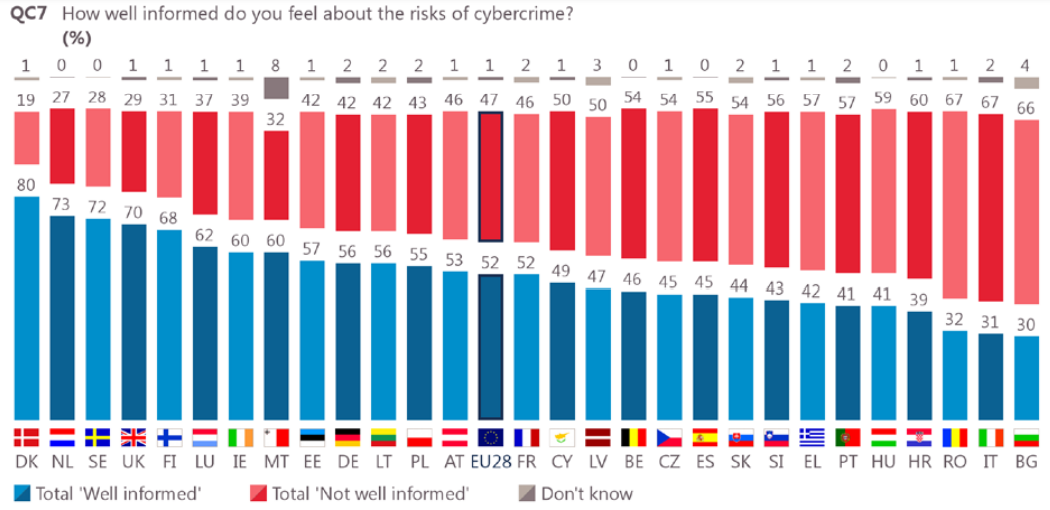
As indicated by data, there seems to be a concentration of “not well informed” citizens among Mediterranean and Balkan countries, compared to the relatively higher awareness of Northern and Scandinavian ones…how come such a distinct disparity?
With the help of this graph, we wish to stimulate your critical thinking and help you come up by yourself with possible indicators and insights that clarify the phenomenon.
Questions:
- Where does this lack od cyber awareness come from?
- What might be further discriminatory variables?
- What can be done to improve laggrd's conditions?
Answers:
To solve this exercise, you really need to make a couple of extra efforts so as to intercept potential skills-gap and needs-assessment that contribute in generating the phenomenon as you saw. This is a typical case in which you are requested to come up with robust conclusions on a given scenario without the possibility to rely on further exhaustive background information.
Most of times, in business environment, your decisions will move through uncertainty and you must be able to trust your guts, reasoning skills and perceptions.
The impact of the output generating from this process, will be based on the care and attention to details you’ve invested on gathering, assessing, evaluating and further processing inputs that orientate your judgment.
Where does this lack of cyber awareness come from?
First of all, cyber awareness is a direct function of digital literacy. If we cross match data from Eurobarometer with other EU reference(s), we will notice that Countries at higher cyber awareness are the same at higher digitalisation rates (direct correlation):
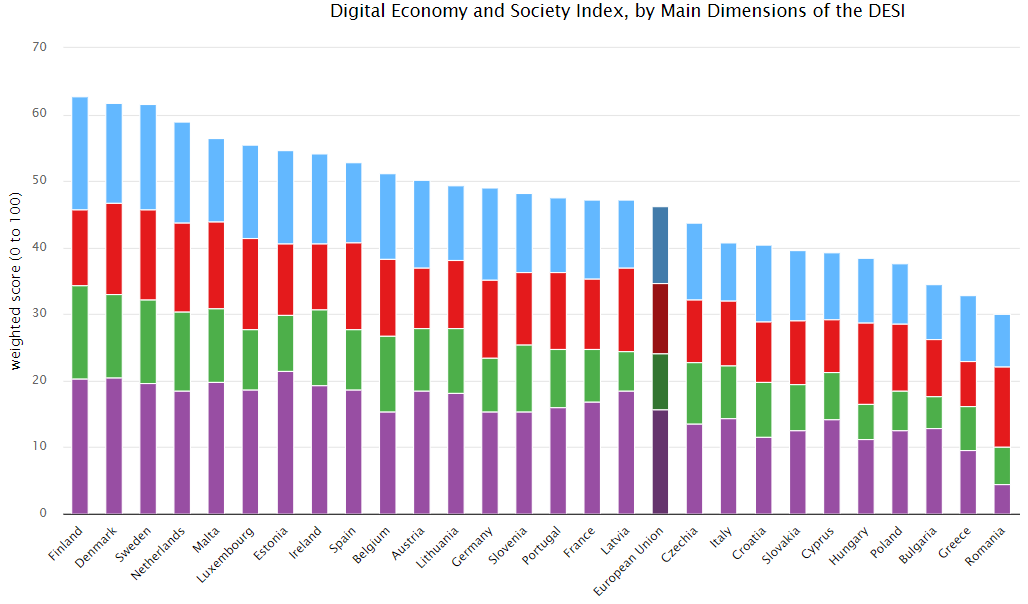
Source: DESI 2020, Digital Economy and Society Index
Blue: Human Capital; Red: Connectivity; Green: Integration of Digital Technologies; Violet: Digital Public Services
What might be further discriminatory variables?
It might be easy to assume that these differences in IT embracement are effect of the availability of infrastructures. Although this is true, it is also a very limiting perception. If we start to look into the evolution over time of each specific variable, connectivity and public digital infrastructure became more and more largely common. A stagnation effect is observed upon the Human Capital factor…symptomatic of the fact that knowledge, skills and cultures did not match up with the on-going technological development – at least, not for all countries.
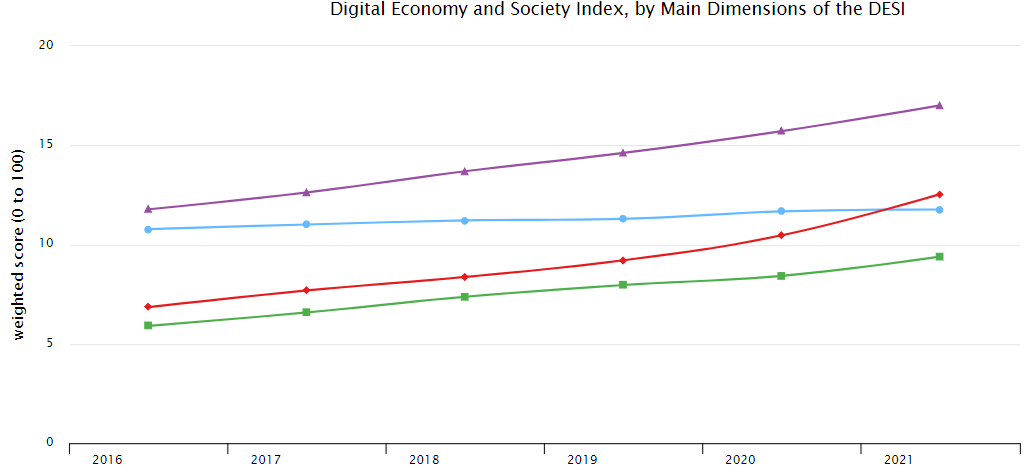
Source: idem
This is proved also by another important index aimed at investigating how EU economies, societies and organisations react – and adapt to – technological development.
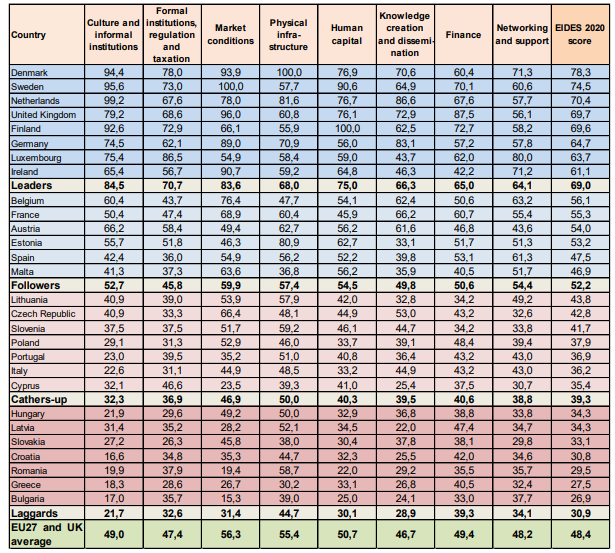
Source: EIDES 2020
Again, results from EIDES (European Index of Digital Entrepreneurship Systems) corroborates findings from DESI and provide for a very interesting lens to interpret Eurobarometer’s highlights.
It is confirmed that Human Capital and Culture represents both two fundamental pillars of digital literacy, and consequently, cyber awareness. Not surprisingly, the EU countries at lowest scores on these two dimensions are all ranking at the bottom of the Eurobarometer chart.
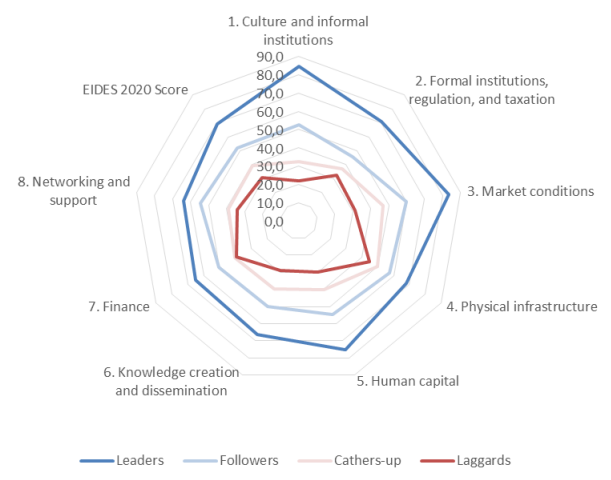
Source: Idem
There is also another important factor to consider, if we wish to wide event further the scope and scale of this analysis.
Northern countries’ national industry is typically capital and knowledge-intensive, while Mediterranean and Balkan industries are dominated by labour-intensive markets. Of course, compared to the latter, capital and knowledge intensive industries are much more IT driven; and as such, people working in this fields are subject to specific capacity building programmes – which in turn increases skills and competences of human capital.
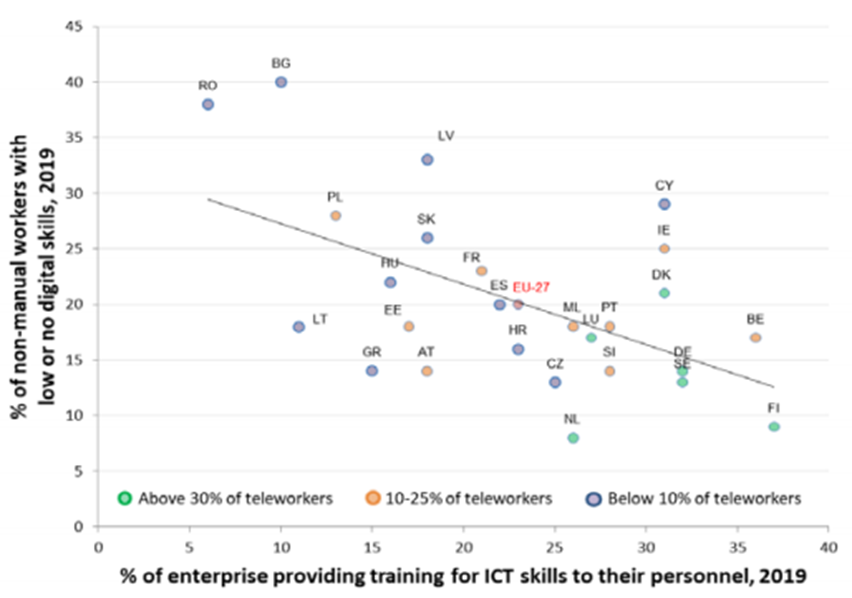
Source: Eurostat
What can be done to improve laggards’ conditions?
Preliminary conclusion → based on the above, education and training seems the key settings to work on to improve the cyber resilience of EU citizens.
Keywords:
Critical thinking

